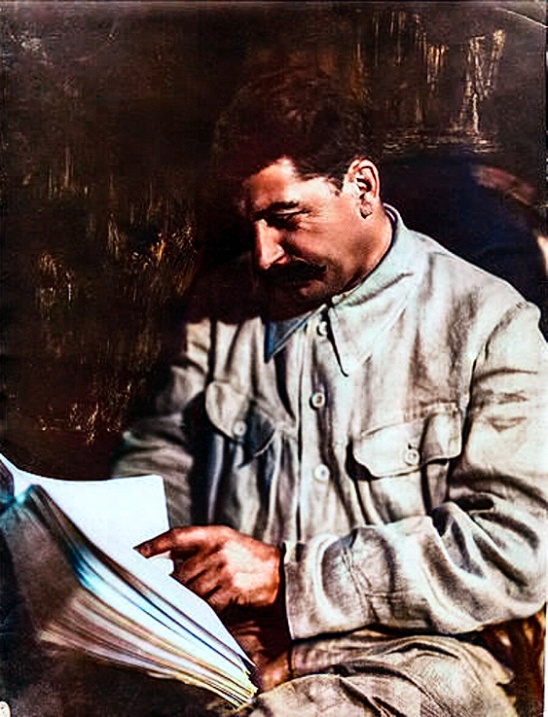Image is of a large protest in the Ivory Coast, sourced from this article in People’s Dispatch.
This week’s megathread is based largely on a detailed article from People’s Dispatch, featuring statements and analysis from Achy Ekessi, the General Secretary of the Revolutionary Communist Party of Ivory Coast (PCRCI), brought to my attention by @jack@hexbear.net’s comment in the last megathread.
The president of Ivory Coast, the 83 year old Alassane Ouattara, is aiming for a fourth term in power while barring out much of the opposition. I can’t really do the all the history of how the situation wound up this way justice in a preamble as it’s fairly complicated (read the article if you are interested), but to summarize, Ouattara is currently the only coherent candidate for the French to support. Back in 2011, the French helped Ouattara overthrow the previous (pan-Africanist) president, Laurent Gbagbo, and then arrested him and sent him to the ICC, and he was then acquitted and released in 2021.
Gbagbo is now running against Ouattara, but his base, the working class, has large swathes that are not present on the voting rolls and so it would be unlikely for him to win. On the opposite side of the spectrum is Tidjane Thiam, a former CEO of the Swiss Bank Credit Suisse, whose base is in the richer strata of the Ivory Coast, which overlaps with Ouattara’s base. He would be more likely to win, but would certainly maintain many Western imperialist relationships. Ouattara, however, has simplified the electoral situation by simply barring both of them from running in the election at all.
Ouattara has, on paper, delivered some amount of economic development to the Ivory Coast. But as expected, most of it is funnelled to the bourgeois, as well as to foreign corporations and governments, while the working class are swallowed by the cost of living crisis. There has been significant infrastructure projects, but these have not only generated massive debt, they also have only really addressed the damage caused by the 2011 civil war and intervention by the French.
The rest of Western Africa has either entirely exited the orbit of France (Niger, Mali, Burkina Faso), are wavering/unstable (Senegal, Benin, Guinea), are beginning to show doubts (Nigeria, Ghana), or are economically weak enough to not be a major blow for the French to lose (Togo, Guinea-Bissau). The loss of the Ivory Coast would be a major setback for French neocolonialism, and be a potent example to nearby countries.
Last week’s thread is here.
The Imperialism Reading Group is here.
Please check out the RedAtlas!
The bulletins site is here. Currently not used.
The RSS feed is here. Also currently not used.
Israel's Genocide of Palestine
Sources on the fighting in Palestine against the temporary Zionist entity. In general, CW for footage of battles, explosions, dead people, and so on:
UNRWA reports on Israel’s destruction and siege of Gaza and the West Bank.
English-language Palestinian Marxist-Leninist twitter account. Alt here.
English-language twitter account that collates news.
Arab-language twitter account with videos and images of fighting.
English-language (with some Arab retweets) Twitter account based in Lebanon. - Telegram is @IbnRiad.
English-language Palestinian Twitter account which reports on news from the Resistance Axis. - Telegram is @EyesOnSouth.
English-language Twitter account in the same group as the previous two. - Telegram here.
English-language PalestineResist telegram channel.
More telegram channels here for those interested.
Russia-Ukraine Conflict
Examples of Ukrainian Nazis and fascists
Examples of racism/euro-centrism during the Russia-Ukraine conflict
Sources:
Defense Politics Asia’s youtube channel and their map. Their youtube channel has substantially diminished in quality but the map is still useful.
Moon of Alabama, which tends to have interesting analysis. Avoid the comment section.
Understanding War and the Saker: reactionary sources that have occasional insights on the war.
Alexander Mercouris, who does daily videos on the conflict. While he is a reactionary and surrounds himself with likeminded people, his daily update videos are relatively brainworm-free and good if you don’t want to follow Russian telegram channels to get news. He also co-hosts The Duran, which is more explicitly conservative, racist, sexist, transphobic, anti-communist, etc when guests are invited on, but is just about tolerable when it’s just the two of them if you want a little more analysis.
Simplicius, who publishes on Substack. Like others, his political analysis should be soundly ignored, but his knowledge of weaponry and military strategy is generally quite good.
On the ground: Patrick Lancaster, an independent and very good journalist reporting in the warzone on the separatists’ side.
Unedited videos of Russian/Ukrainian press conferences and speeches.
Pro-Russian Telegram Channels:
Again, CW for anti-LGBT and racist, sexist, etc speech, as well as combat footage.
https://t.me/aleksandr_skif ~ DPR’s former Defense Minister and Colonel in the DPR’s forces. Russian language.
https://t.me/Slavyangrad ~ A few different pro-Russian people gather frequent content for this channel (~100 posts per day), some socialist, but all socially reactionary. If you can only tolerate using one Russian telegram channel, I would recommend this one.
https://t.me/s/levigodman ~ Does daily update posts.
https://t.me/patricklancasternewstoday ~ Patrick Lancaster’s telegram channel.
https://t.me/gonzowarr ~ A big Russian commentator.
https://t.me/rybar ~ One of, if not the, biggest Russian telegram channels focussing on the war out there. Actually quite balanced, maybe even pessimistic about Russia. Produces interesting and useful maps.
https://t.me/epoddubny ~ Russian language.
https://t.me/boris_rozhin ~ Russian language.
https://t.me/mod_russia_en ~ Russian Ministry of Defense. Does daily, if rather bland updates on the number of Ukrainians killed, etc. The figures appear to be approximately accurate; if you want, reduce all numbers by 25% as a ‘propaganda tax’, if you don’t believe them. Does not cover everything, for obvious reasons, and virtually never details Russian losses.
https://t.me/UkraineHumanRightsAbuses ~ Pro-Russian, documents abuses that Ukraine commits.
Pro-Ukraine Telegram Channels:
Almost every Western media outlet.
https://discord.gg/projectowl ~ Pro-Ukrainian OSINT Discord.
https://t.me/ice_inii ~ Alleged Ukrainian account with a rather cynical take on the entire thing.
Reports of israel bombing Yemen from the Cradle:
Over 30 Israeli airstrikes on Yemen in around 10 minutes.
death to israel

The Institutional Revolutionary Party (Spanish: Partido Revolucionario Instituciona, PRI) is a political party in Mexico. The party held uninterrupted power in the country and controlled the presidency twice: the first one was for 71 years, from 1929 to 2000, the second was for six years, from 2012 to 2018.
The PRI governed Mexico as a de-facto one-party state for the majority of the twentieth century; besides holding the Presidency of the Republic, all members of the Senate belonged to the PRI until 1976, and all state governors were also from the PRI until 1989.
Throughout its nine-decade existence, the party has represented a very wide array of ideologies, typically following from the policies of the President of the Republic. Starting as a center-left party during the Maximato, it moved leftward in the 1930s during the presidency of Lázaro Cárdenas, and gradually shifted to the right starting from 1940 after Cárdenas left office and Manuel Ávila Camacho became president. PRI administrations controversially adopted neoliberal economic policies during the 1980s and 90s, as well as during Enrique Peña Nieto’s presidency (2012–2018). In 2024, the party formally renounced neoliberalism and rebranded itself as a “center-left” party.
In the 2018 general election, as part of the Todos por México coalition, the PRI suffered a monumental legislative defeat, scoring the lowest number of seats in the party’s history. Presidential candidate José Antonio Meade also only scored 16.4% of the votes, finishing in third place, while the party only managed to elect 42 deputies (down from 203 of 2015) and 14 senators (down from 61 in 2012). The PRI was also defeated in each of the nine elections for state governor; the National Regeneration Movement (MORENA) won four, PAN three, and the Social Encounter Party and Citizens’ Movement each with one.
In the 2024 general election, as part of the Fuerza y Corazón por México coalition, the party supported independent candidate Xóchitl Gálvez (considered close to the National Action Party) for President, who finished in second place. The party recorded its worst result by vote share in its history, although narrowly managed to avoid its worst seat results thanks to a slight gain made in the Senate. It was also the first time in its history that the party failed to win at least 10 constituency seats in the Chamber of Deputies.
Amid the party’s worsening electoral performance, it has attempted to redefine itself as a social democratic party since 2021.
So, is the PRI trying to appeal to the Mexican working class? If things continue as they are, the PRI will soon dissolve (like the PRD) and most of its members will likely join the PAN, while some more left-wing members will likely join MORENA.
Pentagon fires intelligence agency chief after Iran attack assessment
US defence secretary Pete Hegseth has fired the Pentagon’s intelligence agency chief, just weeks after a White House rebuke of a review assessing the impact of American strikes on Iran. Lt Gen Jeffery Kruse will no longer serve as head of US Defence Intelligence Agency (DIA), the Pentagon said in a statement. Two other senior military commanders have also been ousted by the Pentagon. The defence department has not offered any immediate explanation on the firings.
In June, President Donald Trump had pushed back strongly on a leaked DIA report that found that attacks on Iran had set back its nuclear programme by months only. The White House declared the agency’s assessment “flat out wrong”. Trump had declared the nuclear sites in Iran “completely destroyed”, and had accused the media of “an attempt to demean one of the most successful military strikes in history”. Speaking at the Nato summit at the time, Hegseth had said that the report was made on “low intelligence” and that the FBI was probing the leak. Kruse’s exit was first reported by the Washington Post.
The DIA is part of the Pentagon and specialises in military intelligence to support operations. It collects large amounts of technical intelligence, but is distinct from other agencies like the CIA. It is understood that Hegseth had also ordered the removal of the chief of US Naval reserves and the commander of Naval Special Warfare Command, an anonymous source told Reuters on Friday. In a statement, US Senator Mark Warner warned that Kruse’s sacking was a sign that Trump had a “dangerous habit of treating intelligence as a loyalty test rather than a safeguard for our country”.
Trump has removed a number of officials whose analysis have been seen to be at odds with the president. In July, Trump said that he had ordered his team to dismiss Commissioner of Labor Statistics Erika McEntarfer “immediately”, after a report showed that job growth had slowed. And in April, Trump fired General Timothy Haugh as director of the National Security Agency, along with more than a dozen staff at the White House national security council. Hegseth has also pushed out a number of military officials at the Pentagon. In February, he fired Air Force General C Q Brown, who was dismissed along with five other admirals and generals.
I thought this twitter thread was interesting:
The U.S. campaign to break Venezuela isn’t about “restoring democracy.” It’s about shutting down a sovereign state that can disrupt oil flows, bypass the dollar, and host adversaries three hours from Miami.
Gulf Coast refineries are tuned to heavy sour crude, Venezuela’s specialty. After Trump revoked Chevron’s waiver in February 2025, Treasury granted a restricted license on July 30, following a July 24 Reuters report that authorizations were imminent.
The license bars proceeds from reaching the Maduro government. U.S. imports resumed on August 21 under those constraints. A sovereign Caracas that can meter Orinoco flows still wields a price lever, sanctions mute it, but don’t erase it.
Caracas has already tested non-dollar lifelines, oil-for-fuel swaps, yuan- and euro-denominated settlement, and off-ramps through third countries. In 2025, Venezuela has kept lobbying for BRICS+ association after Brazil’s 2024 veto.
If a sanctioned mid-tier petrostate can keep selling without the dollar, the sanctions machine loses aura. Breaking Maduro is message traffic to the rest of OPEC+ and BRICS-adjacent capitals: settle outside our rails and we will bankrupt your state or replace your cabinet.
The court-supervised auction of PDV Holding, CITGO’s parent, is deep into 2025 bidding and recommendations to satisfy $19B in creditor claims. Regime change would guarantee corporate custody of Orinoco Belt reserves and downstream infrastructure without legal friction. “Anti-corruption” becomes the solvent for ownership transfer.
Washington cannot tolerate an allied logistics node for adversaries a three-hour flight from Miami. Caracas has run refinery rehab, fuel swaps, and technical assistance with sanctioned states; it hosts political and commercial channels that punch through U.S. veto power.
The 2025 SOUTHCOM posture statement focuses on countering “malign influence” and notes the Guyana–Venezuela flashpoint. Overthrow Maduro, and you sever those corridors, re-impose inspection rights on ports and airfields, and re-install U.S. ISR reach across the Caribbean.
In February 2025, the U.S. designated Tren de Aragua a Foreign Terrorist Organization. In March, the administration invoked the Alien Enemies Act to remove suspected members without standard due process.
Roughly 250 Venezuelans were sent to El Salvador’s CECOT supermax under the program before courts curtailed it; reporting indicates El Salvador received around $20,000 per detainee per year.
In May, a declassified National Intelligence Council memo assessed the Maduro regime “probably does not” direct TdA’s operations in the U.S., a sharp split between intelligence and policy.
In May 2025, the International Court of Justice ordered Venezuela to refrain from holding elections in the disputed Essequibo region. ExxonMobil’s Stabroek expansion and U.S.–Guyana defense cooperation continue in parallel, insulating Guyana’s ramp from Venezuelan contestation.
The Arco Minero, gold, coltan, rare metals, gives Caracas hard-currency elasticity under sanctions. U.S. sanctions on Venezuelan gold date back to 2018–2019, and the UAE remains a major laundering hub per 2025 reporting. A friendly government would “formalize” the belt, which is code for foreign custody of extraction and export.
Venezuela still runs Telesur and state-backed media partnerships across Latin America. Overthrow resets the signal environment: licenses revoked, stations defunded, embassies realigned, and every future crisis reframed through Washington’s lens, no more competing broadcast from Caracas into the region.
If Venezuela can outlast 26 years of sanctions, sabotage, coup attempts, and still retain its oil lever, others learn the blueprint. If it falls, the lesson is simpler: nationalize at scale, and your cabinet gets replaced.
That is the real objective, code a rule into the system: sovereignty that interferes with U.S. energy, currency, or logistics lanes is a temporary condition.
That’s the stack. Energy discipline, dollar hegemony, asset capture, hemispheric denial, domestic optics, Esequibo insulation, mineral custody, narrative blackout, and exemplary punishment. Everything else is cover noise.
Someone made a website documenting ukrainian draft kidnappings. https://uadraftmuseum.ch/
lol

You know the story going round atm ‘Ghislaine Maxwell denies seeing ‘inappropriate’ conduct by Trump’ she also said the same thing about Clinton, I wonder why that isn’t being included in headlines and being buried in articles if reported at all?
the Pivot to Asia, except its Grandpa Simpson walking in, seeing thousands of PLA missiles pointed at him, and walking out https://archive.ph/RfUEf
Should America’s military plan for a retreat from the Pacific?
When America goes to war, it likes to be on the offensive. “Nobody ever defended anything successfully,” Gen. George S. Patton famously said. “There is only attack and attack and attack some more.” But for six months after Pearl Harbor, the U.S. military retreated and retreated some more. The U.S. garrison in the Philippines, under Gen. Douglas MacArthur, steadily retreated before the Japanese onslaught that culminated in the surrender at Bataan in May 1942. Isolated outposts at Wake Island and Guam fell, while the decimated and outnumbered U.S. fleet carefully stuck to hit-and-run as America mobilized for total war. Today, a U.S. Army officer has a warning: In the face of growing Chinese military power, America needs to relearn how to conduct a fighting retreat in the Pacific.
“Fading advantages in firepower, distributed forces, and the growing operational reach of China’s People’s Liberation Army (PLA) require an expansion of operational thought,” wrote Maj. Patrick Smith in a recent essay for Military Review, an Army professional publication. “The joint force must consider methods of retrograde to shape advantages in time, space, and force.”
I fucking love tactical-speak,
 ’s bits of it are barely even exaggerated, American cops and troops do genuinely talk like this. I’m expanding my operational thought dude, I’m fucking shaping my advantage in time and space!
’s bits of it are barely even exaggerated, American cops and troops do genuinely talk like this. I’m expanding my operational thought dude, I’m fucking shaping my advantage in time and space!Smith lists several factors that imperil America’s position in the Pacific. “Small constellations of U.S. elements — ashore and afloat — encircle the looming mass of mainland China,” he wrote. “Operating on tenuous exterior lines, they are vulnerable to defeat in detail by a prodigious array of standoff munitions or blockade.” Resupply is difficult within range of Chinese weapons, reserves of personnel and munitions are scarce, and “regional partners can quickly about-face on support to U.S. forces, making presence in some locales untenable.” Smith also worries that the U.S. lacks sufficient sealift, arguing that “glaring training shortfalls in crisis response, worsened by maintenance deficiencies, compromise U.S. capacity to conduct amphibious actions.”
…
Smith argues that the U.S. needs to relearn how to retreat. “Fighting withdrawals and delays will be sharpened arrows in the quiver of operational leaders campaigning in the early stages of a Pacific fight,” he wrote. “In those precarious moments, the joint force should prudently select positions from which it can absorb repeated blows while degrading enemy means.” Smith envisions a widely distributed joint force that would “confound the PLA with a targeting dilemma if it decides to switch to the offensive.” Deception operations would be key: “Similar to Grant’s illusory movements to confuse Lee, feints, demonstrations, and advances within and outside of theater may freeze enemy actions to create time and space for movement of friendly forces.” Adroit maneuvers, well-timed withdrawals and clever deception operations would exploit American strengths and Chinese weaknesses, Smith argued.
Y’know, somehow I don’t think China’s really planning on, like, chasing the USN around and seizing random Pacific islands. If the US retreats from the closest islands and thus loses the bases that they could most effectively strike China from… then, uh, that’s pretty good for the Chinese? That’d be a pretty funny WW3 actually, the US retreats in order to bait PLAN into chasing them, and China just goes “uh, okay, cool!” and continues on as usual, with the war turning into just occasional skirmishes while Americans at home are going fucking insane from continuous seething
 (and then we all get nuked, which would be more the
(and then we all get nuked, which would be more the  kind of funny). But yeah, this isn’t an invasion of Russia (with the US in the role of Russia) - a fighting retreat only works if the enemy actually chases you so you can inflict casualties on them during the process, hence the fighting part.
kind of funny). But yeah, this isn’t an invasion of Russia (with the US in the role of Russia) - a fighting retreat only works if the enemy actually chases you so you can inflict casualties on them during the process, hence the fighting part.The thing about distributing your forces is that you’re buying their survival with the degradation of your own offensive capability - you need a certain degree of mass to actually attack effectively. We see the ground equivalent of this in Ukraine - with drones and omnipresent ISR, it’s difficult to actually mass troops for an attack without them getting struck ahead of time, which in turn relegates combat to mostly small skirmishes, without any big-arrow moves that can make large gains. This was a factor in the failure of Ukraine’s 2023 counteroffensive, where they didn’t have the sufficient mass of troops necessary to penetrate Russian defenses - and the persistent cope among Western commentators was that the Ukrainians just decided not to do that because they were dumb morons, rather than acknowledging that maybe they simply could not do that because of the circumstances of the modern battlefield. There’s also examples of this going all the way back to WW2 - the German defense against the Normandy landings was stifled by Allied air superiority, forcing German mechanized troops to split up in smaller units and travel at night and across smaller roads in order to avoid being spotted and bombed, which slowed their repositioning to Normandy and caused them to arrive piecemeal rather than as whole coherent divisions, and thus be unable to counter-attack anywhere near as effectively.
And the same thing can play out with naval and air operations - if you’re not sending in enough planes and missiles to actually overwhelm the enemy’s air defenses, then you’re not going to get anywhere. If you split up your fleets in smaller units so they can disperse and be less vulnerable, then each one of those new units won’t be able to hit anywhere near as hard. And additionally, resupplying a distributed force becomes much more logistically complex - the resupplies themselves are also vulnerable and need protection. Again going back to WW2, the Allies started out with lots of small convoys over the Atlantic, but later shifted to a smaller number of much larger convoys which, by featuring a greater concentration of ships, were much more capable of defending themselves against German subs. Except if you’ve distributed your force, you don’t have that option - you’ll need lots of convoys (although these days air-supply is at least a lot more viable) to reach all the small units you’ve broken up your forces into.
… continued in comment …
Col. Antauro Humala, leader of the Etnocacerist movement, recently met with former Bolivian president Evo Morales.
Antauro Humala, leader of the Etnocacerista party, highlighted Runasur as a great geopolitical initiative “It coincides with Simón Bolívar’s vision of a united [Latin] America against the US and the Europeans, because the struggle of the peoples continues.”
“For us, Evo Morales represents the legitimate leadership of the Plurinational State of Bolivia. Considering Evo’s history of struggle, I maintain that by law of gravity he will return to power, because it is impossible for an electoral process to have legitimacy when the main popular leader is arbitrarily prevented from participating,” he added.
Humala also stated: “I have no doubt that the next Bolivian government will suffer a major political and social crisis, so once again the ground will be fertile for Bolivian patriots led by Evo to regain power and never let it go again.”
On the territorial dispute between Peru and Colombia, Antauro Humala supports Gustavo Petro’s territorial claim on behalf of Colombia: “Let’s hand over Santa Rosa Island in the name of Bolivarian brotherhood. We are the children of Bolívar; there is no reason to fight over this. That region was abandoned by the Peruvian government a long time ago.”
Antauro was recently criticized by more conservative factions of the Peruvian left, which is traditionally more socially conservative, for saying that he would support Verónika Mendoza (New Peru, Democratic Socialist) in an election, even though she is more socially liberal than he is.
- Telegram
BREAKING: Far-right 2019 Bolivia coup leaders Fernando Camacho, Jeanine Añez, and Marco Pumari will be released from prison
Bolivia’s highest judicial authority has ordered a review of the procedural deadlines in the case of the three coup leaders. A decision must be made within 24 hours. Camacho’s attorney said the family and his defense team welcome the court’s decision with “satisfaction and joy.”
how’s European re-militarization going? https://archive.ph/EwToI
Bulgaria Still Waiting for F-16 Jets as U.S. Cites Shortage of Tanker Aircraft
Bulgaria ordered its first F-16s back in 2019 but has received only two so far, with Washington blaming the delays on a lack of refueling tankers. Bulgaria’s long wait for the F-16 Block 70 drags on. Out of the first batch of eight fighters ordered in 2019, only two have been delivered. Defense Minister Atanas Zapryanov admitted the military still has no clear timeline for the arrival of the remaining jets, Bulgarian outlet Mediapool reports. According to the original plan, most of the aircraft were supposed to arrive between July and October 2025. However, deliveries have been stalled due to what the U.S. described as a shortage of aerial refueling tankers, needed to ferry the fighters across the Atlantic. “Their number is limited and they are heavily tasked with supporting US Air Force priority missions. Flights to partner nations are rescheduled or canceled when necessary,” the Departament of Defense’s response states.
I guess the USAF’s inventory situation can’t be all that rosy if they can’t spare eight fucking jets
From Defense Express we want to add, that unlike Sweden, which ships its Gripens overseas by commercial vessels, the U.S. insists on flying F-16s to export customers. The heavy tanker workload has raised eyebrows, as the only recent known large-scale deployment was during June’s Midnight Hammer strike against iran’s nuclear program.
But I thought the US was supposed to be a magical country with the bestest logistics around and can just pull resources out of their ass and deploy a gajilion troops in any part of the world instantly?! You’re telling me they can’t find some spare tankers to fly EIGHT planes across the Atlantic? Or I guess this whole thing is just a flimsy excuse, because of the above point
also, not sure if Iran being with a non-capital letter is a misspelling, or the Ukrainians have extended their policy of spelling Russia with no capital letters to Iran for… some reason? What the hell has Iran even done to them, jeez
For now, Sofia can only wait. The Foreign Military Sales (FMS) framework, under which the F-16s were purchased, does not allow for penalties in case of delays — a situation where Bulgaria sanctioning the U.S. seems unthinkable.
with allies (or suzerains) like these… love to make a bulwark against the evil ruskies and then not bother arming them with anything
Complicating matters, Bulgaria’s very first F-16V Block 70 suffered a major defect. Upon arrival in April, the jet was declared unfit to fly due to a faulty circuit board. The issue forced it to miss the planned flyover at the May 6 Armed Forces Day parade. Sources suggested the problem arose because the original 2019 contract, worth $1.2 billion for eight fighters, left no budget for spare parts. In 2022, Sofia ordered another eight F-16s for $1.3 billion — about $162.5 million per jet — but even that price looks modest compared to todays contracts, such as those for the Philippines.

Ghislaine Maxwell denies seeing ‘inappropriate’ conduct by Trump
Wow i guess that clears all that up then
❗️An Israeli drone malfunctioned and fell in the southern Lebanese town of Bint Jbeil.









